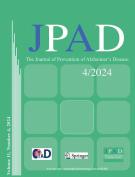Association between the use of information and communication technology and cognitive decline stratified by social isolation: The Otassha study - 26/03/25
 , Hisashi Kawai a, Manami Ejiri a, Hiroyuki Sasai a, Kazushige Ihara b, Harumi Nakada c, Atsushi Araki a, Hirohiko Hirano a, Yoshinori Fujiwara a, Takao Suzuki d, Shuichi Obuchi a
, Hisashi Kawai a, Manami Ejiri a, Hiroyuki Sasai a, Kazushige Ihara b, Harumi Nakada c, Atsushi Araki a, Hirohiko Hirano a, Yoshinori Fujiwara a, Takao Suzuki d, Shuichi Obuchi aAbstract |
Background |
Prevention of dementia is crucial for reducing its social burden. Social isolation is a known risk factor for dementia. The use of information and communication technology is associated with reduced cognitive decline. However, longitudinal associations of the use of information and communication technology with cognitive function remain unknown, especially for older adults who are socially isolated and at a high risk of cognitive decline.
Objectives |
To investigate the association between the use of information and communication technology and changes in cognitive function among older adults with and without social isolation.
Design |
Longitudinal observational study
Setting |
Data was obtained for two cohorts of community-dwelling older adults aged 65 years with no cognitive impairment (Mini-Mental State Examination score ≥24) at baseline.
Participants |
Participants were defined as those who completed baseline assessments of the use of information and communication technology, social isolation, and cognitive function and underwent at least one follow-up assessment of cognitive function in a follow-up survey conducted annually through 2023.
Measurements |
The use of information and communication technology was measured using the technology usage sub-items of the Japan Science and Technology Agency Index of Competence. Cognitive function and social isolation were assessed using the Mini-Mental State Examination and the six-item Lubben Social Network Scale, respectively. Data from the two cohorts were combined to examine the association between the use of information and communication technology and changes in cognitive function, as well as the association between the use of information and communication technology and the incidence of cognitive decline (Mini-Mental State Examination <24), using mixed effects models and Cox proportional hazards models, respectively. These analyses were conducted separately based on social isolation.
Results |
A total of 1,322 participants (mean age: 72.3 years, 39 % male) were included in the final analysis. The median follow-up period was 3.9 years. Individuals who used information and communication technology experienced a slower rate of cognitive decline than non-users (-0.09, 95 % confidence interval: -0.11 to -0.07 vs. -0.18, 95 % confidence interval: -0.21 to -0.15). In addition, information and communication technology use was associated with a significantly lower risk of cognitive decline (hazard ratio: 0.73, 95 % confidence interval: 0.70–0.76). This association remained consistent among older adults with social isolation (hazard ratio: 0.91, 95 % confidence interval: 0.85–0.97).
Conclusions |
The use of information and communication technology was associated with a reduced risk of cognitive decline, even among socially isolated older adults. Creating an environment that enables effective ICT use with appropriate support may help preserve cognitive function in aging populations.
Le texte complet de cet article est disponible en PDF.Keywords : ICT, Social isolation, Cognitive function, Longitudinal change, Older adults
Plan
Bienvenue sur EM-consulte, la référence des professionnels de santé.

